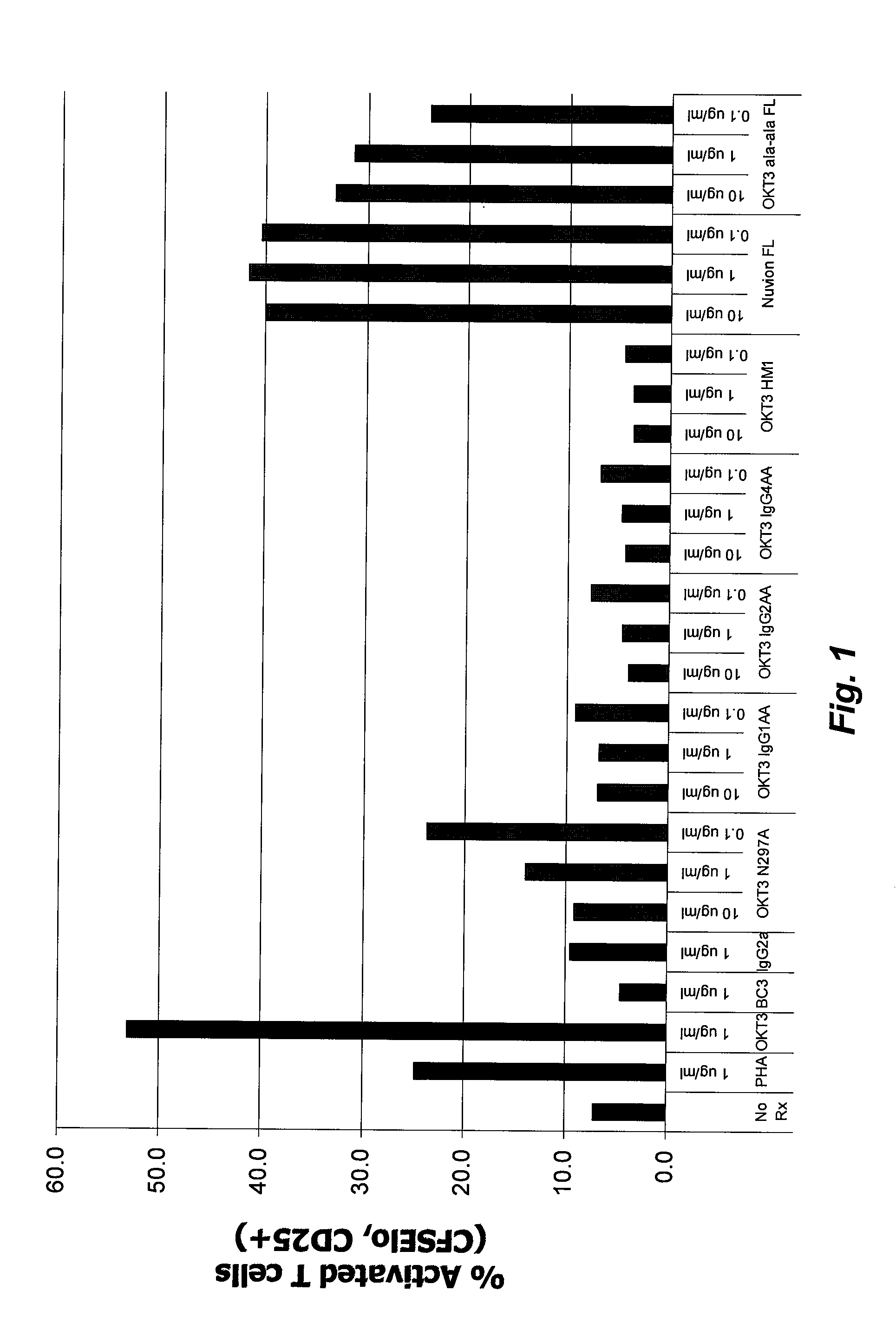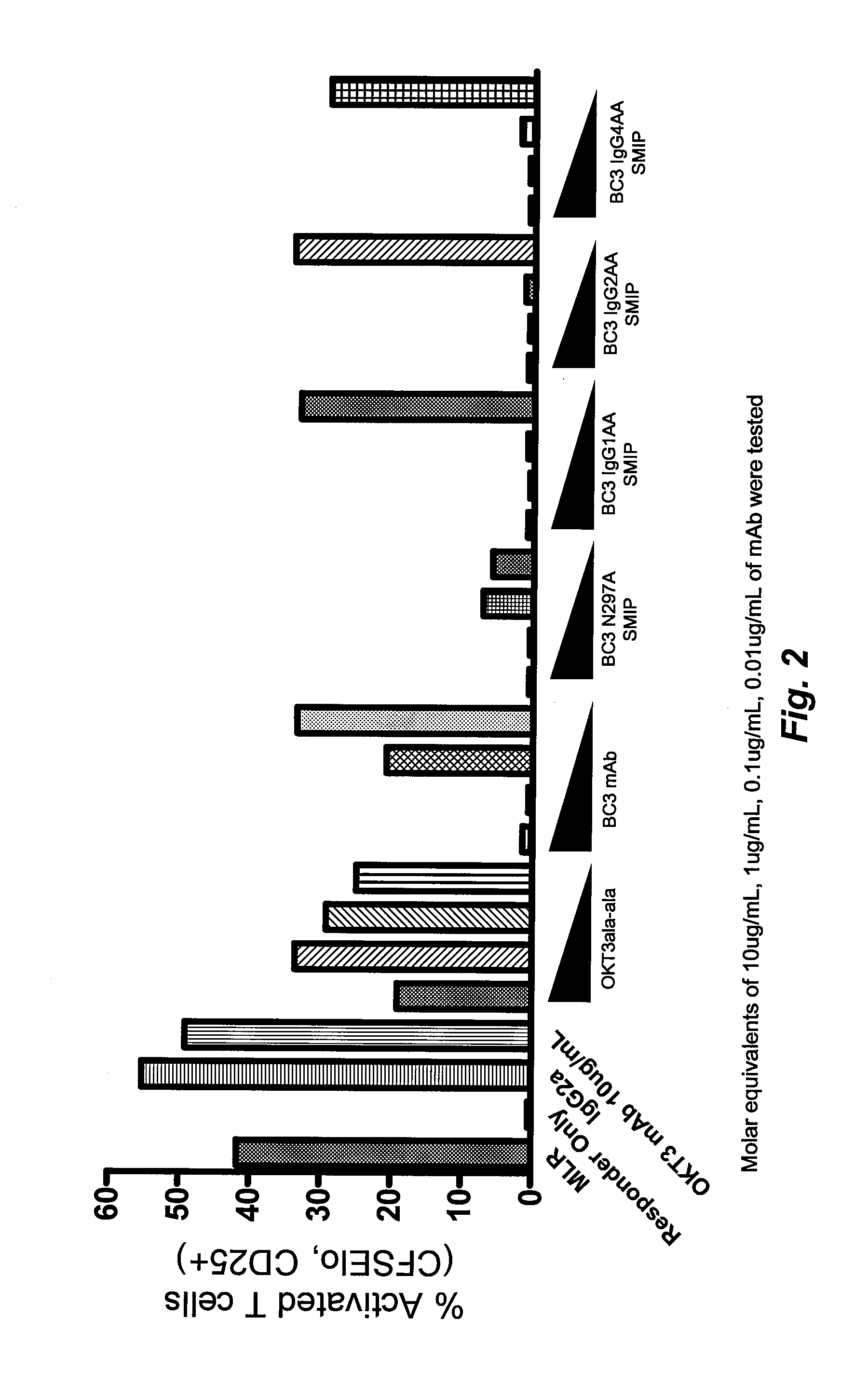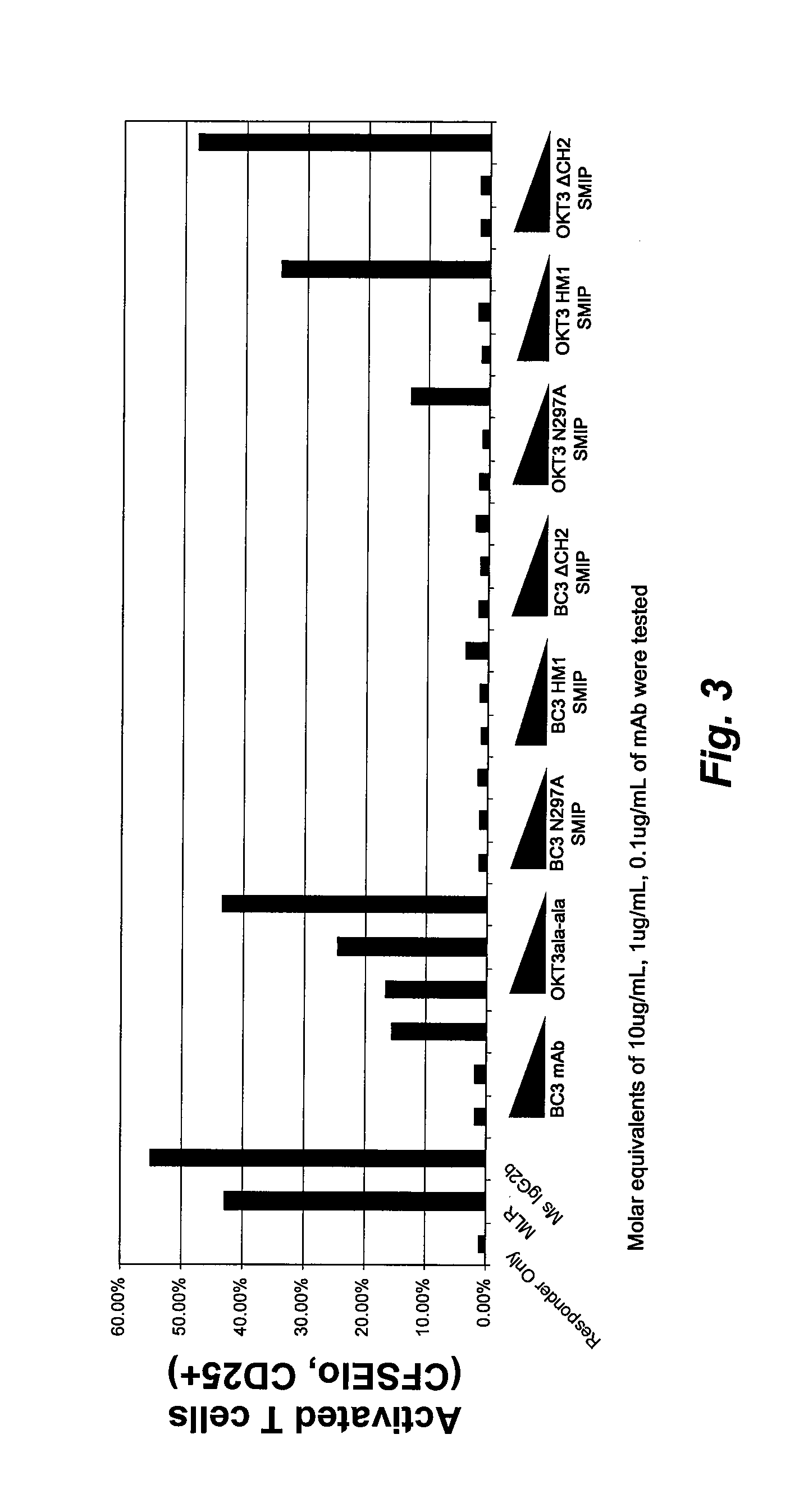TCR Complex Immunotherapeutics
a complex immunotherapy and tcr technology, applied in the field of single-chain fusion proteins, can solve the problems of cytokine release, dose limitation and toxic at very low drug doses, and limited the more widespread use of okt3 in transplantation and the extension of its use, so as to reduce the rejection of solid organ transplantation
- Summary
- Abstract
- Description
- Claims
- Application Information
AI Technical Summary
Benefits of technology
Problems solved by technology
Method used
Image
Examples
example 1
Fusion Proteins do not Activate Primed T Cells or Induce Cytokine Release by Primed T Cells or Accessory Cells
Isolation of Human Peripheral Blood Mononuclear Cells (PBMC)
[0260]Fresh human whole blood was obtained in 30 mL syringes containing heparin (up to 25 mL blood per syringe) and was kept at room temperature up 2 hours before processing. The blood was diluted in a 50 mL conical tube with an equal volume of room temperature RPMI-1640 (no supplements). The diluted blood was mixed 2 to 3 times by gentle inversion. Using a 25 mL pipette, 20 to 25 mL of the diluted blood was layered carefully over 15 mL of Lymphocyte Separation Media (MP Biomedicals) contained in a 50 mL conical tube. The tubes were centrifuged at 400 g for 30 minutes at room temperature. Cells were collected from the interface of the density gradient and were combined in a 50 mL conical tube, with no more than 30 mL of cell suspension per tube. The tubes containing the cell suspensions were filled with RPMI-1640 co...
example 2
Fusion Proteins Block a T Cell Response to Alloantigen
Human Mixed Lymphocyte Reaction (MLR)
[0265]Human PBMCs from two donors were isolated as described previously and kept separate. Based on previous studies, PBMCs from one donor were slated to be the stimulator population and PBMCs for the second donor were used as the responder population. Cells from both donors were labeled with CFSE as previously described. The PBMCs from the donor to be used as the stimulator were treated with mitomycin C (MMC) to prevent cell division. MMC (Sigma) was resuspended in complete (HS) RPMI media (RPMI-1640 containing 10% human AB serum, 100 U / mL penicillin, 100 ug / mL Streptomycin, and 2 mM L-glutamine) at a concentration of 0.5 mg / mL. PBMCs were resuspended at a concentration of about 1×106 / mL and MMC was added to a final concentration of 25 μg / mL. The cell and MMC mixture was then incubated at 37° C. for 30 minutes after which time cells were washed thrice with complete (HS) RPMI media. Prepared s...
example 3
Fusion Proteins Block Memory T Cell Response to Recall Antigen
[0269]Human PBMCs were isolated from a donor that scored positive in a previous screen for reactivity to tetanus toxoid. PBMCs were labeled with CFSE as previously described and then resuspended at a concentration of 2×106 / mL in complete (human AB serum) RPMI (RPMI-1640 containing 10% human AB serum, 100 U / mL penicillin, 100 μg / mL Streptomycin, and 2 mM L-glutamine). 0.5 mL of CFSE-labeled cells and 1 ug / mL of tetanus toxoid (EMD), along with experimental treatments, were added to a 48-well plate. The cells were incubated at 37° C. with 5% CO2 for the duration of the experiment. Experiments were harvested 8 days after set-up. Harvested cells were stained with fluorescently tagged antibodies against CD5 (340697, BDBiosciences) and CD25 (555433, BDBiosciences) and run on a flow cytometer (LSRII, Becton Dickenson). Data was analyzed using FlowJo flow cytometry software (TreeStar). The gating strategy was as follows: cells th...
PUM
| Property | Measurement | Unit |
|---|---|---|
| equilibrium dissociation constant | aaaaa | aaaaa |
| concentration | aaaaa | aaaaa |
| concentration | aaaaa | aaaaa |
Abstract
Description
Claims
Application Information
 Login to View More
Login to View More - R&D
- Intellectual Property
- Life Sciences
- Materials
- Tech Scout
- Unparalleled Data Quality
- Higher Quality Content
- 60% Fewer Hallucinations
Browse by: Latest US Patents, China's latest patents, Technical Efficacy Thesaurus, Application Domain, Technology Topic, Popular Technical Reports.
© 2025 PatSnap. All rights reserved.Legal|Privacy policy|Modern Slavery Act Transparency Statement|Sitemap|About US| Contact US: help@patsnap.com



